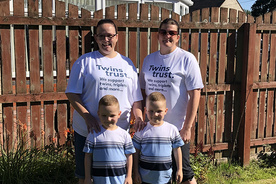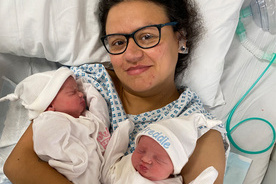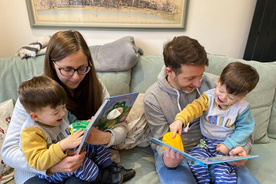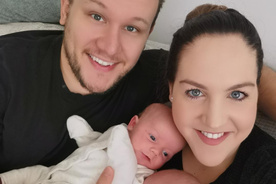10 September 2021
Teenage twins Hope and Esme from East Sussex survived life-saving surgery for TTTS 17 years ago
Mum Sharon wants to give hope to other families who may have had a diagnosis.
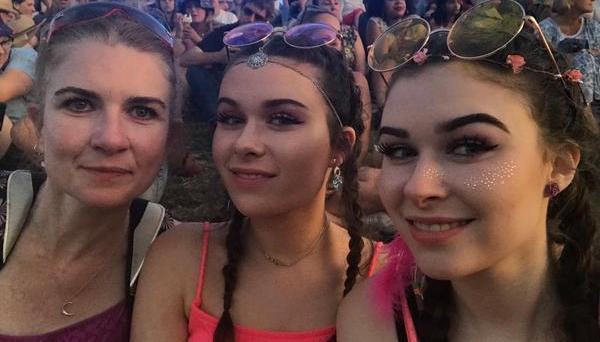
“We have two beautiful, kind, clever, funny, talented and inquisitive young women in our lives, because of three things.
“Our determination that we would do whatever it took to save them - a determination I did not know we had.
“Two, their determination that they survived the trials of a traumatic anti-natal experience and come out bright and courageous and such a joy to be around.
“And three, due to the research that came before us; the many thousands of women that were told 'there is nothing we can do' as their babies were dying from this dreadful syndrome and yet there had been no medical research into the condition or trials into treatment.
“We are so grateful for the many researchers, medical staff and families who tried to find a solution to this condition that affect a small amount of identical twin pregnancies.
“That early pioneering research and work brought us the miracle of Esme and Hope – but still more needs to be done.”
Sharon said her pregnancy was a surprise as she thought she was not able to have children, then even more of a surprise when her and partner Russell found out it was twins!
“We had been told about a very rare complication of twin pregnancy called Twin to Twin Transfusion Syndrome and at our 17 week scan it was confirmed,” said Sharon, who was immediately referred to Kings Hospital in London under Professor Kypros Nicolaides.
He told us that our babies were very sick and that there was a low chance of saving them, adding that if we didn't have laser surgery that day, the babies would die within the next 48 hours.
In TTTS, part of the blood flow is diverted from one ‘donor’ twin to the ‘recipient’ twin. A lack of blood supply can affect the donor twin’s growth, so they are smaller than average with the larger ‘recipient’ twin suffering heart strain as it works harder to cope with the extra blood supply. The recipient twin then develops excess fluid to compensate for the excess blood.
Laser surgery can help, sealing off blood vessels and then draining excess fluid.
“The operation went very smoothly. The Professor was so skilled, and I felt in good hands throughout. The idea that a needle, then a camera on an endoscope and then a laser was going into the giant bump on the front of my body was frightening and uncomfortable, but I felt no pain.
“He deftly worked around Twin 1 who was fully stuck to the side and moved towards the umbilical cord, but not before he stopped to show us the beautiful face of Twin 2 dangling in the amniotic fluid - tiny hairs on her skin, eyes firmly closed and nostrils filled.
That image on the screen will linger with me forever. We knew that two daughters were fighting for life inside me.
After a tense wait, a further scan revealed two heart beats, but a few days later Sharon’s waters broke.
“A doctor said we would need to have the babies that night and that they would not live. He was kind and sorry - but I said I wanted to sleep with them one more night.
“During that sleepless night I felt them both move for the first time. Fizzing and flitting in my belly - letting me know they were there and that despite having no fluid they had not given up.”
A scan the next day confirmed that there was practically no fluid around the babies but the couple were told not to make any decision until they saw the consultant.
He told them that although it was clear Sharon was losing fluid, it was refilling continuously and if she could get to 24 weeks, the twins could be delivered.
Sharon was put on antibiotics and endured many weeks of anxiety, but it was during this time that she and Russell married.
The girls made it to November 24, 2003 born by c-section at 31 weeks +4, both weighing the same - 3lb 10oz. They were cared for in Special Care for the next month.
“Slow growth and worry that each day would be the one that the medics would say 'we are sorry - your baby has died or your baby is showing signs of brain injury’ were all real possibilities that plagued the first few years of their lives,” said Sharon.
We are incredibly fortunate to be where we are. There is hope after a TTTS diagnosis and with even more research we increase the number of babies saved.
-strap.svg)
